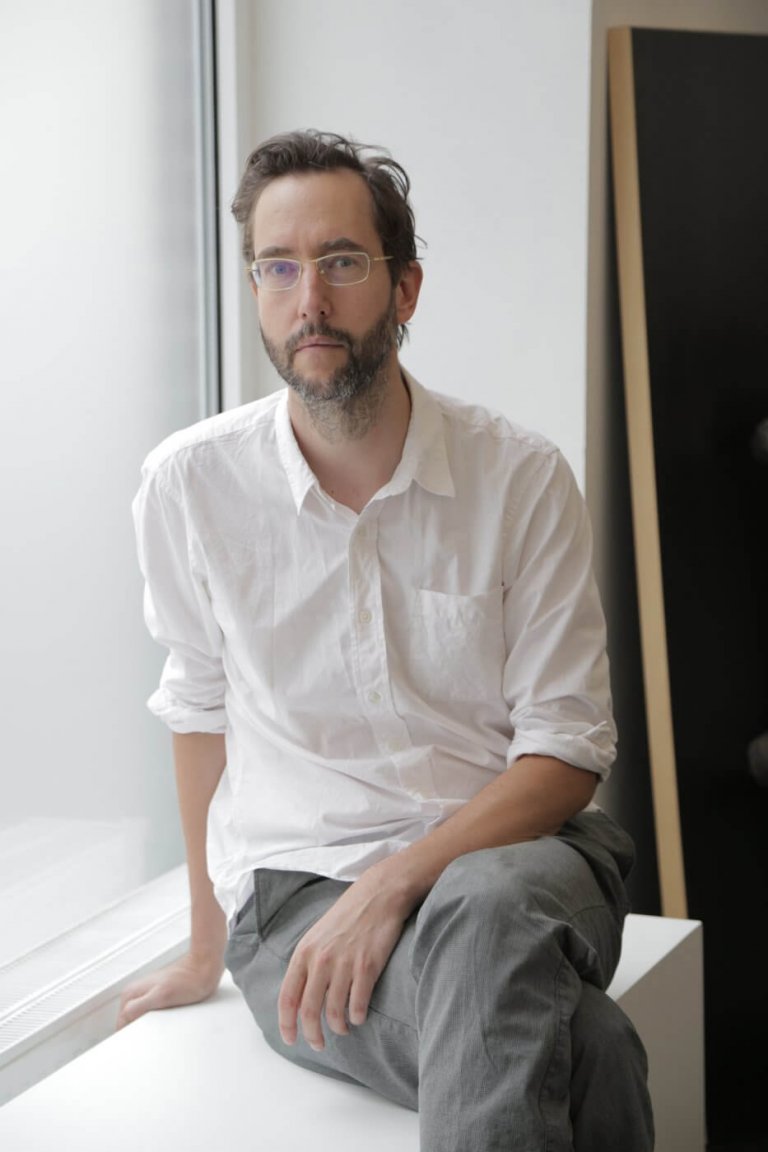*1977 (Austria)
studies: Universität für angewandte Kunst Wien, architecture
lives and works in Vienna
In his sculptures, videos and installations he deals with the representation of places, political ideas and historical events and analyses what role culture – art, architecture and design – plays in this process. He critically analyses the aestheticization and economization of urban space, pointing not only to the social or ideological transformations these spaces are undergoing, but also to the role of architecture and culture in contemporary society, as well as to the values that are often irreversibly lost. Fogarasi’s works, formally inspired by conceptual and minimal art, are at once documents and sculptures.
Nine Buildings, Stripped
The project “Nine Buildings, Stripped” documents the changing surface of the city. It collects and presents real fragments of demolished or reconstructed buildings. Bound together in tightly layered material packages, they become sculptural portraits of specific sites. The result are image-documents that refer to the specific but refer to the general. They speak to the care of materialized memory, or the lack thereof.
Repetitively, the artist returns to the material trace of recent pasts with his clean assemblages. He cites through them both iconic architecture, which is in the crosshairs of often contradictory camps – sentimental preservationists and unsentimental investors, as well as bland mass production. The re-presentation of the past is done in a slick way without ambition to evaluate. The fragile packages reflect the real temporariness of our lived environment, our momentousness. It is reinforced by the idea of musealization of the presented fragments. Fogarasi’s material library is well ahead of the systematic nature of many memory institutions. What we are losing and what we have lost we will know in the future thanks to his subtle material revision.
For the SEFO 2024 Triennial, Andreas also encloses two local, Olomouc epochs in his compact packages. He sets them alongside the exclusive details of Prague’s first-class modern landmark, the Intercontinental Hotel. The ossified details of the local architectural production of the 1970s, the Jednota administration building, move us with the precision of the aluminium profiles and the fragility of the distorted surfaces of the former curtain glass facades. The era of transformation permeates the linoleum and plastic wallpaper that, in the post-revolutionary years, were meant to mask the surviving prefabricated construction system of the local postmodernist gem, the former Faculty of Science building. The fragility of the compositions is a direct parallel to the fragility of the lives of buildings associated with one, at most two generations.
The project was produced in collaboration with Phileas – The Austrian Office for Contemporary Art.
